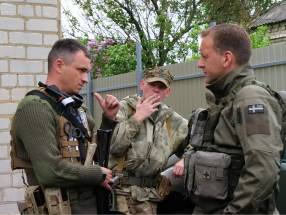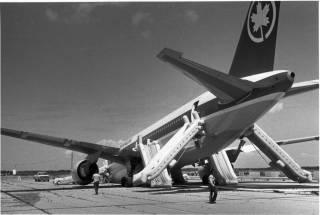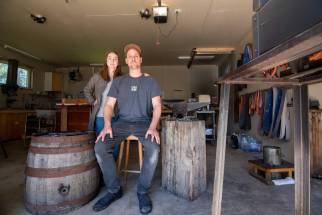No margin of error Ontarian creating replica 'Gimli Glider' cockpit for landing's 40th anniversary
Read this article for free:
or
Already have an account? Log in here »
To continue reading, please subscribe:
Monthly Digital Subscription
$19 $0 for the first 4 weeks*
- Enjoy unlimited reading on winnipegfreepress.com
- Read the E-Edition, our digital replica newspaper
- Access News Break, our award-winning app
- Play interactive puzzles
*No charge for four weeks then billed as $19 plus GST every four weeks. Offer only available to new and qualified returning subscribers. Cancel any time.
Read unlimited articles for free today:
or
Already have an account? Log in here »
Hey there, time traveller!
This article was published 02/06/2022 (937 days ago), so information in it may no longer be current.
Twenty-six years before US Airways Capt. Chesley (Sully) Sullenberger’s successful water landing became known as the Miracle on the Hudson, Capt. Bob Pearson authored his own miracle in Gimli.
On July 23, 1983, Air Canada flight 143 was en route to Edmonton from Montreal with 61 passengers aboard when it ran out of fuel at 41,000 feet — owing, in part, to a metric conversion error — somewhere over northwestern Ontario. The flight was diverted to Winnipeg, but quick calculations from first officer Maurice Quintal showed the plane wouldn’t make it with both engines out.

Pearson decided to take a massive gamble: glide his Boeing 767 to a decommissioned Royal Canadian Air Force base in Gimli. As the plane approached the runway, however, it was coming in too high and too fast, so Pearson took another big risk: he executed a manoeuvre called a slip to increase drag and shed some altitude.
Neither pilot realized their runway at Gimli had been repurposed into a busy drag-racing strip — which, on a Saturday evening in late July, was filled with barbecuing families, unaware of the virtually silent 767 bearing down on them. Pearson would later recall the faces of two boys who had decided to ride their bikes down the length of the runway, close enough that he could see their terror from the cockpit.
Pearson’s sharp thinking and experience as a glider pilot got the plane safely to the ground. That the front wheel never locked into place — and a guardrail had been installed down the middle of the converted runaway — got the plane to stop.
Seventeen minutes after both its engines died, the Gimli Glider, as it would come to be known, was safely on the ground. There were no causalities.
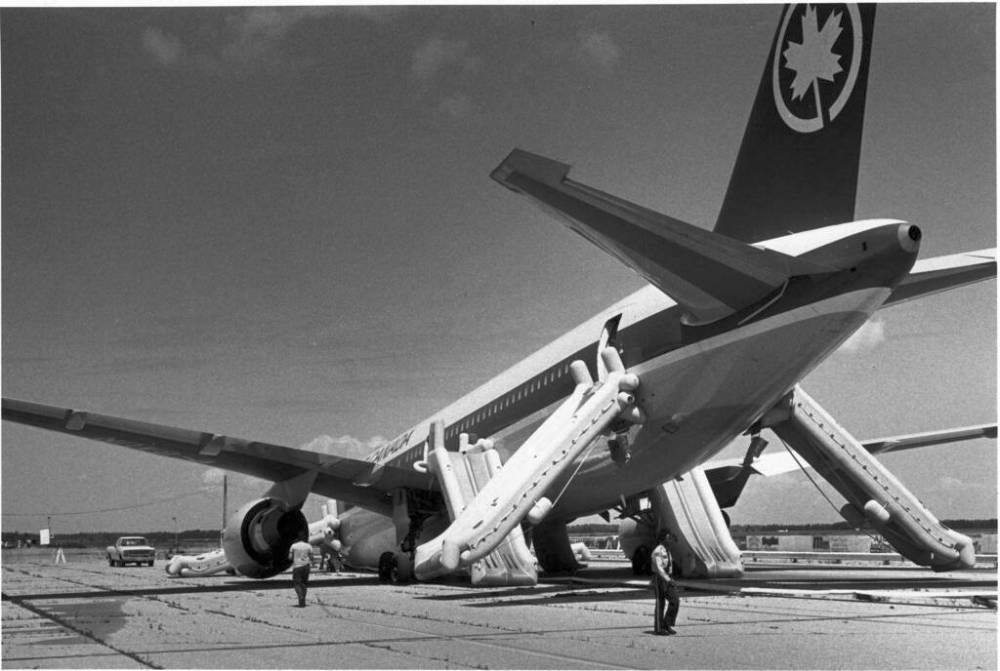
Perry Van Veen had just graduated from high school in the summer of ’83, and was working towards getting his pilot’s licence when the remarkable story of the Gimli Glider first captured his imagination.
“I remember watching the story on the six o’clock news and being really fascinated by the fact he was able to make that landing — and he only had one chance to do it, too,” Van Veen says over the phone from his home in Welland, Ont. “Since that time, I’ve always been very interested in the story.”
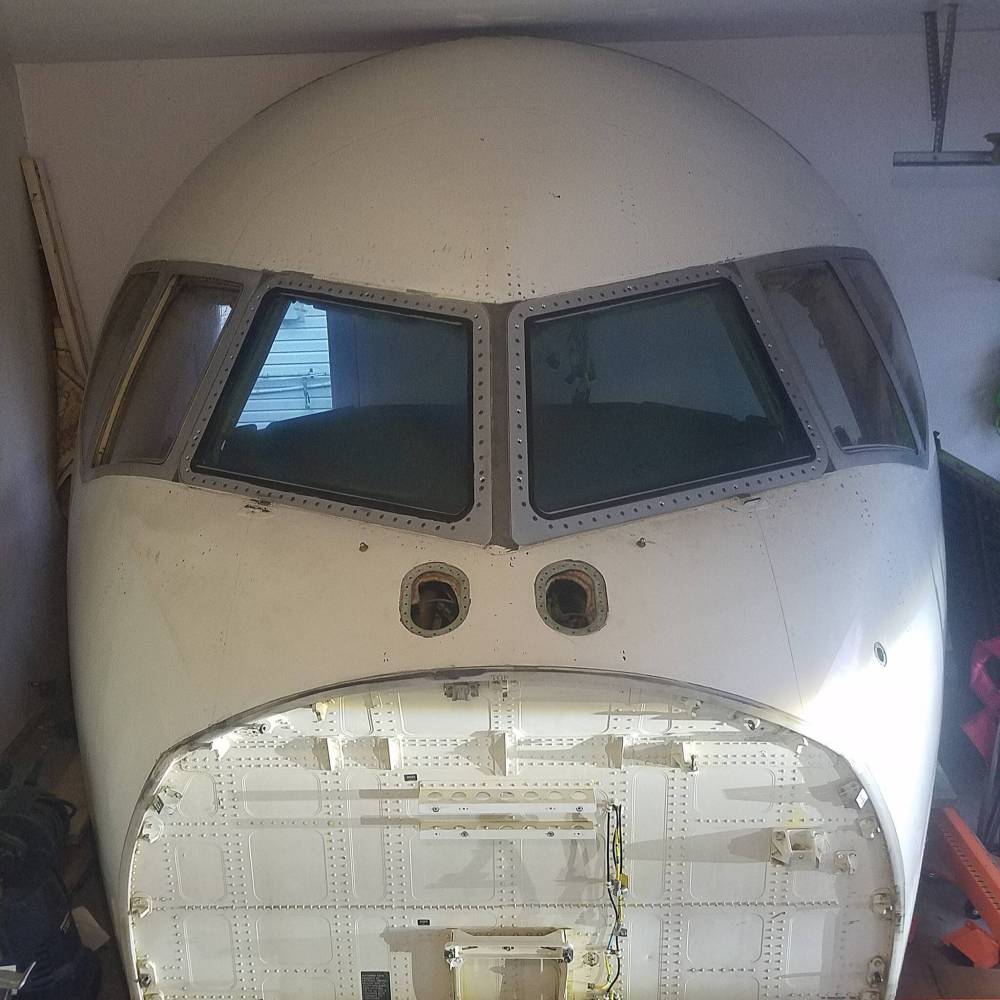
Nearly 40 years later, the Gimli Glider continues to hold many people’s fascination — in no small part because it’s a rare aviation disaster story with a happy ending. But most people’s fascinations with the Gimli Glider do not involve an elaborate, years-long restoration project of a Boeing 767 cockpit they have in their garage.
Van Veen is not most people. For the past six years, he’s been working on creating a replica of the Gimli Glider’s cockpit, to look exactly as it did on that day in 1983.
The Gimli Glider — formally, C-GAUN fin no. 604 — continued to fly after the 1983 incident before retiring to the Mojave desert in 2008 after 25 years of service. Van Veen had followed the plane over the intervening years, as one of his hobbies was buying and selling airplane parts. After an unsuccessful bid on the actual cockpit from the Gimli Glider, he got his hands on another cockpit from a retired Boeing 767.
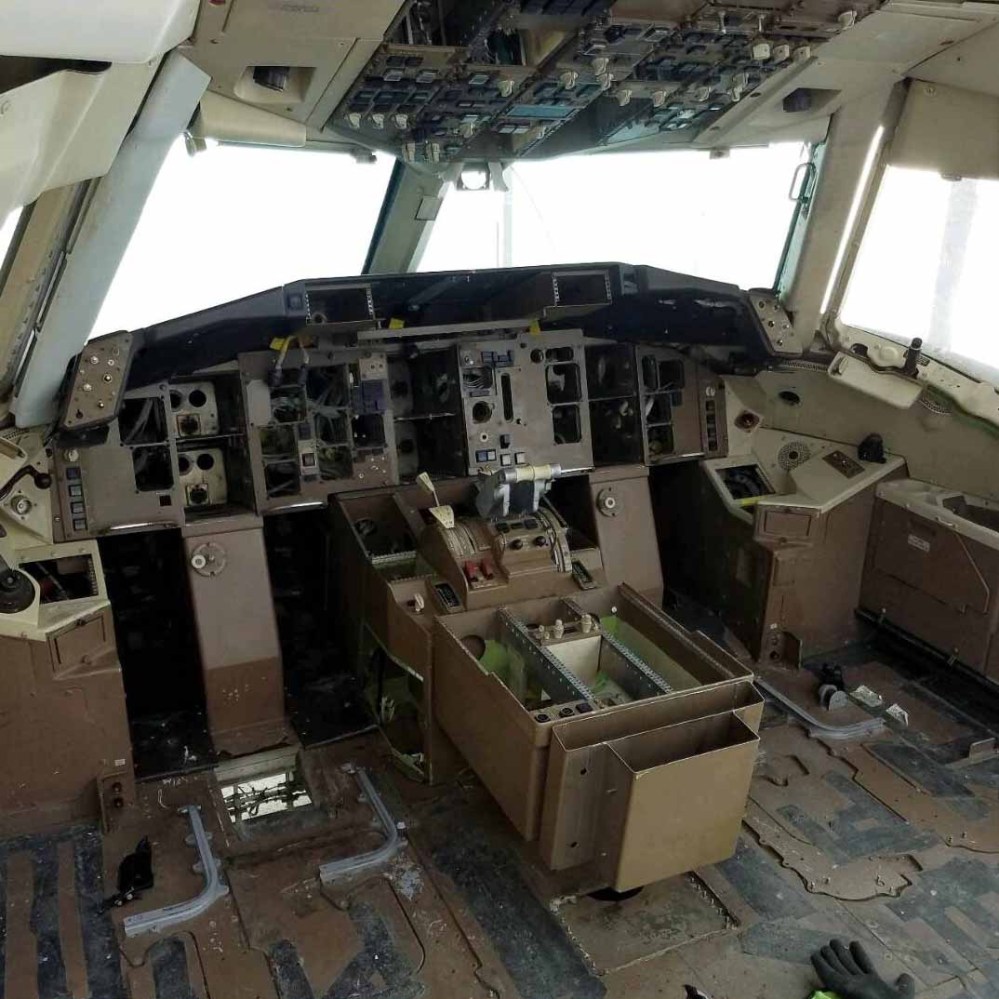
The failed bid was actually a blessing in disguise. “It would have been stripped — everything would have been missing,” Van Veen says. “When they tear down an airplane, they sell all the usable parts. I mean, sure, it’s the Gimli Glider, but it would have nothing inside.”
And so, Van Veen embarked on his replica project. He was able to secure some parts from the actual Gimli Glider — including the captain’s yoke, crew seats and other instruments — and has been painstakingly collecting other parts from other 767s of that era, including the throttles and side panels from the Gimli Glider’s sister craft, Fins 601 and 603. It’s time-consuming work, looking up part numbers, but part numbers hold the keys to accuracy.
“It’s very similar to a puzzle, just trying to get all the pieces together,” he says. “I’d like to have things accurate, exactly as it was, so that if you were to go on the Gimli Glider back then, when it was in service, you would not be able to tell the difference.”
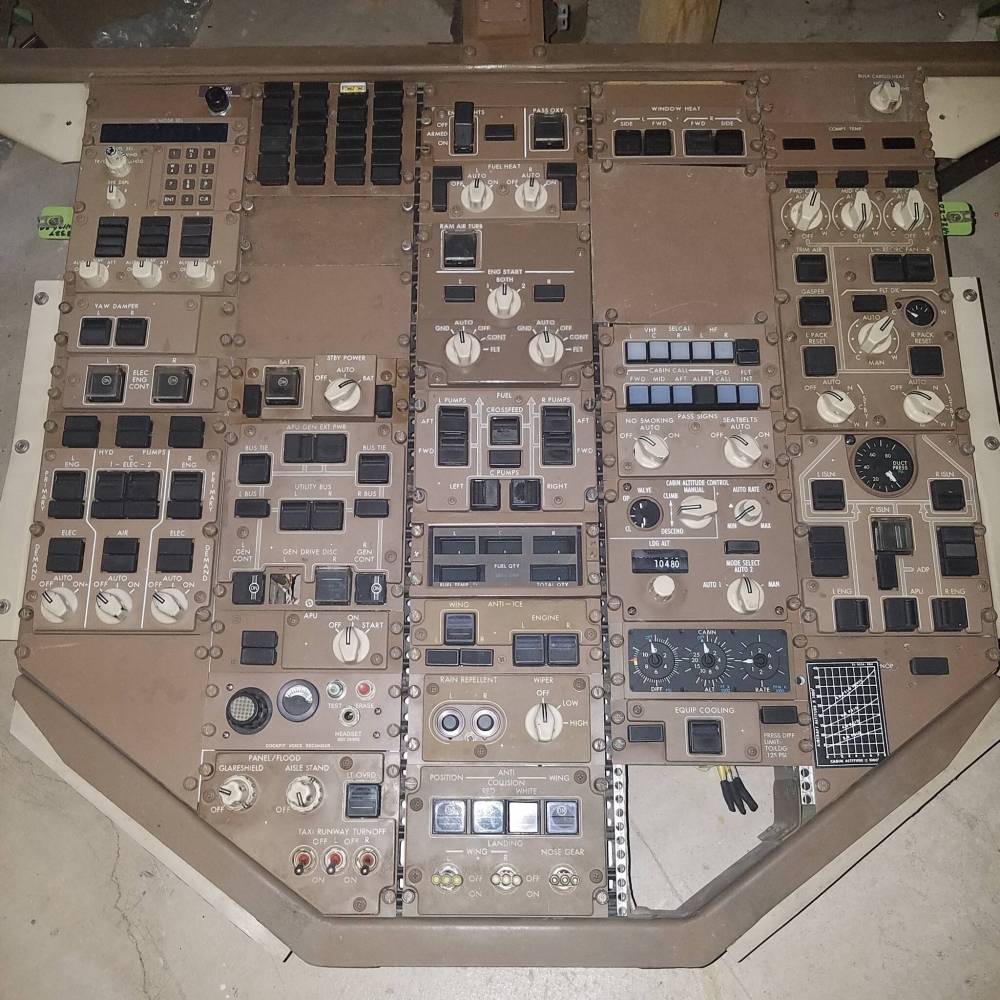
Indeed, he’s sparing no detail — right down to determining the colour code of paint so the exterior can bear a stripe in the the exact shade of red as the Air Canada livery circa 1983.
Van Veen says his commitment to accuracy is almost a curse. “You lie awake at night thinking, ‘Where can I get that? Where can I find out?’ It’s a lot of contacting people, too — pilots that used to fly with Air Canada and that particular airplane and asking them, ‘What do you remember?’ You know, I get a chuckle because a lot of guys go, ‘That was 20 years ago, I don’t remember.’”
Van Veen hopes the replica will be done in time for the 40th anniversary next July. As to where it will go after that — a museum, perhaps — he’s not sure, but recreating a tangible piece of Canadian aviation history has been a joy.
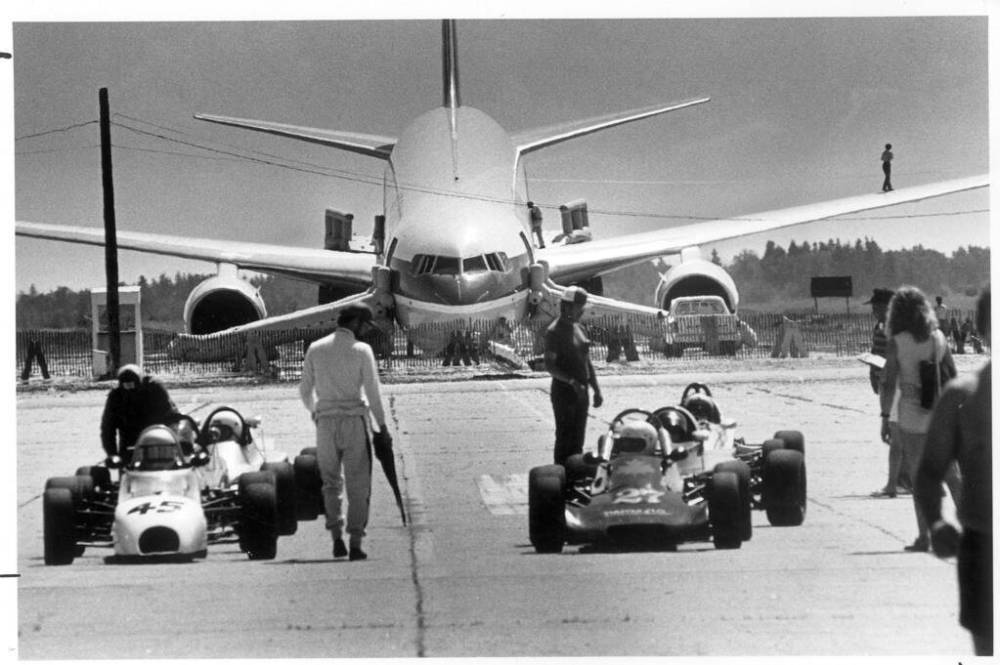
His wife, however, will probably not be sorry to see the cockpit depart their garage.
“If you were to ask her if she’s cool with (having it in the garage), she would say no,” he says with a laugh. “But I told her it would only take up half so she’s still able to park her car in it. That was the deal.”
Van Veen has a GoFundMe to support the project.
jen.zoratti@winnipegfreepress.com
Twitter: @JenZoratti

Jen Zoratti
Columnist
Jen Zoratti is a Winnipeg Free Press columnist and author of the newsletter, NEXT, a weekly look towards a post-pandemic future.
Our newsroom depends on a growing audience of readers to power our journalism. If you are not a paid reader, please consider becoming a subscriber.
Our newsroom depends on its audience of readers to power our journalism. Thank you for your support.
History
Updated on Friday, June 3, 2022 11:52 PM CDT: Fixes typo of word, anniversary










